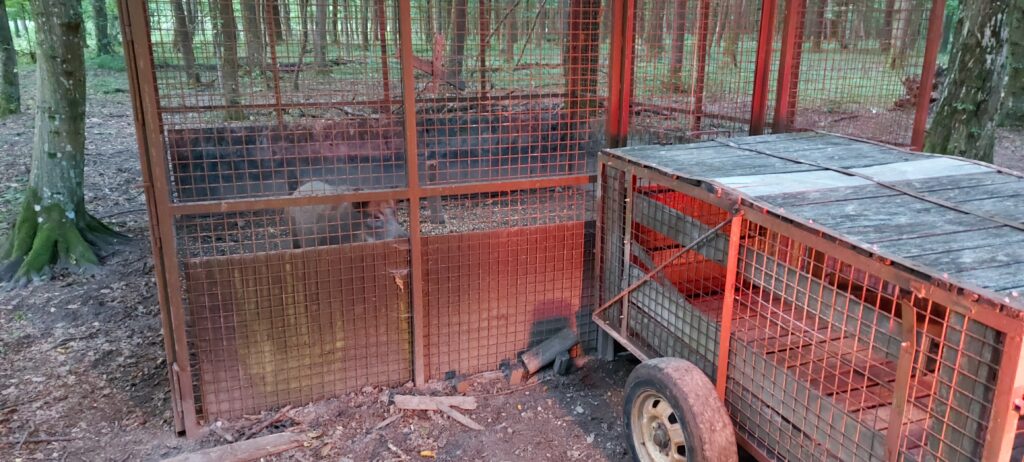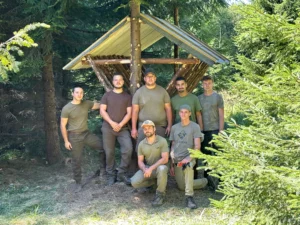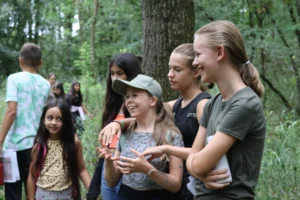This is the fifth time that our Foundation has launched a call for applications for summer internships, but this year there were three different internship locations to choose from. As a result, our Foundation supported a total of 11 students to successfully complete their two and six-week summer internships in 4 different rotations in Nagybajom, Békáspusztán and Transylvania.
In our summer internship diaries series, we present how students spent their days, what knowledge and experience they gained from their internships, through their stories. First of all, we share the experiences of our internship in Nagybajom, Hungary, between 3-13 July 2023, where the South Transdanubian Fauna Hunting Society hosted two students of the University of Sopron, Bencie Mészáros and Gábor Piri.
Our 11 days in Nagybajom
The exercise started at 8 am on 3 July 2023 at the hunting lodge of the South Transdanubian Fauna Hunting Society. Upon arrival we met the leader of the exercise, Mr. Sándor Németh, and professional hunter colleagues Csaba Boda, Bálint Horváth, Péter Horváth, Dávid Vicze. After a short introduction and a presentation on the shape, composition, topography and natural features of the hunting area, as well as on game management and the number of hunts, the research conducted in the area and the partial results of the research so far were presented.
Although we have been to the area before in university settings, so we had some prior information, I still find the research with goldfish very interesting. The practical benefits are undeniable and I personally look forward to seeing what results are obtained.
We soon got down to work and set about one of the great wildlife management tasks of the day, the maintenance of wildlife damage prevention electric fences. The task was to keep the trail of the electric fence free of vegetation, because when vegetation reaches the fence it can fall down, so there is not enough tension in it, which reduces the game's ability to keep it away. Chemical control was achieved using a motorised backpack sprayer and a total herbicide solution. The trail was thoroughly detoxified, checking that there was no damage to the wires and that there was even tension throughout. This task took up most of the afternoon.
In the evening we were taken on a game drive, where we had the opportunity to observe a large bull bull pack on a 60 hectare alfalfa field. As we were told, there were several known bulls among them, and we discussed which bulls were shootable and why, and why others were not. Next we looked at two reapers in the hope of seeing a jackal. We did manage to see one in the first meadow, but it was very far away from us and did not come any closer when called.
On the second day we woke up to torrential rain, but that didn't put us off either. During the morning we fed the scatterers and sharpened a wild boar trap in the hope of catching wild boar during the night. In the afternoon we practiced trophy scoring of big game species at the hunting lodge. During the judging we had the opportunity to judge the trophies of a bull roe deer, a bull fallow deer, a roe buck and a wild boar using the international CIC system.
Afterwards we visited the renovated stables, which serve as a trophy room. I really enjoyed this part of the day as we saw a lot of beautiful trophies, but what I liked the most were the experiences and stories that went with them.
During the evening game drive we drove out to a mown and baled wild field, where we saw no game other than three hares, a few wild boars and two deer from the car on the way.
The next morning started early as the catcher, which had been sharpened the day before, had to be checked, so the meeting was scheduled for 5 o'clock. On arrival at the catcher we were greeted by a sight that was almost full of pigs, as we managed to catch a sow with six piglets and a roe. We quickly went back to the hunting lodge for the transport van. On our return we positioned the catching trolley by the door and then hooked it on the off-road vehicle as we drove there. As we learned, in such a case, only piglets should be brought into the garden as the piglets are likely to die inside. Alternatively, if sows are brought in, there is a good chance that they will die outside, which is nobody's intention. So the task was to get only the piglets on the trailer. It took a good ten minutes to do it. The sow and her piglets were released. The piglet was released into the garden.

With that done, we set about building high passes. The primary goal was to create as many frames as possible. The task was to select 4 straight acacia poles of sufficient thickness per high jump. The legs were placed side by side and twisted together, cut to a length of 3.6 metres, and then 1.6 metres down from the top, the floor support was marked and notched. The floor support is made of 5x10cm oak planks. The length of the floor support was also 1.6 metres. The next step was to nail the so-called "andrics" for bracing between the two legs in an "x" shape. When the two pairs were thus completed, the frame was assembled with the help of the andrics. Now standing on four legs, the lower half of the chassis was also horizontally fitted with an "x" of stringers. And now the frame was complete. During the day, working in two brigades, a total of four high les were completed. After the hides were built, the excess wood was piled up in a heap.
After that we bagged corn in the granary and then went to feed the scatterers and catchers in the area. On the game camera on one of the traps we could see that the deer were also sneaking in for a tasty morsel. The next trap had a large boar in it, which we could see on the camera images, so the decision was made to arm the trap.
Our next day started at 5 o'clock as well, as we had to check the catcher we had sharpened the day before as soon as possible. On the way to the catcher we saw a jackal and a calf on one of the mowing paddocks, who could not get into the pig pen. On reaching the catcher, we were saddened to find that although the boar had been in the catcher overnight, it had not been roasted. Then came a more interesting programme. We went to see a wild boar shooting the night before with David and his Jagd-terrier dog Hera. We found blood where the shot had been fired. The dog picked up the trail nicely and definitely went on it. She had to pick it up again in a few places where it was crossed by fresher pins, but she managed these difficult conditions without any problems. After a good two hours of searching, however, we unfortunately had to give up our search as the trap lines had also run out and the pig was holding on to the condo and the trap was completely trampled.

Back at the hostel, after a quick change of clothes, we headed off for the professional programme to the deer farm in Bőszénfa. Here we were able to hear how they continue to manage the wild land and grassland, which is of great importance for the rearing of deer and winter feeding. We gained an insight into the composition of the herds and which types of crops have proved most successful. The species and their abundance on the farm and the main farming practices such as meat production and hunting. We looked at two garden areas where bulls are kept. One of the gardens had middle-aged bulls and the other had bulls in their early old age. Here we were told that these bulls would soon be moved to the hunting garden section. We then headed towards the hunting garden, stopping on the way at the duck rearing pond where we were told how the ducks are reared and hunted. A drive around the hunting garden gave us an insight into its layout and the flora of the wild fields there, which in this case was a mixture of white whey and pasture. Afterwards we visited the exhibition hall and had lunch, after which we visited the animal exhibits.
From there the trip continued to Kaposvár, where the head of the hunting sector gave a detailed presentation on the management of the company, its hunting areas, hunting data and the management problems caused by ASF in the "House of Forests" demonstration centre established by SEFAG Zrt.
The next morning also started early and began with a catching check. When we got to the trap, we saw that we had caught the canoe, so we headed to the hunting lodge to get the transport truck. The procession was the same as before, we finally took the pig into the garden and released it. Then at the hunting lodge, we loaded up the machinery needed to build the stalking road, which consisted of two clearing saws, a chainsaw and a motorized leaf blower. On arrival at the site, we surveyed the route and tried to mark it out by trampling the vegetation, then using a clearing saw to cut the vegetation in the first pass and the mulching head to remove the stalk debris on the return trip. The trees on the path were chopped up and the stumps were cut lower. From the almost finished path, the remaining parts were removed with the leaf blower. Since we were done on time, we decided to start building the bridge over the creek here after lunch.

After lunch, we again loaded up at the hunting lodge with acacia poles, oak planks and reused the old fence with acacia planks. We also transported the timber to the site and got to work. First we chopped and sharpened the ends of four support posts, then we hammered them into the ground and on these we tapped the four metre long acacia posts. The stakes and posts were supported by the planks, giving the structure rigidity and support.
"On several days we had the opportunity to build a scout trail, learn how to build a high pass and David and I even built a bridge over a stream for completeness. For me, the greatest experience was making the bridge and the accompanying scout path, because that was the most spectacular, building something from scratch."
(Bence Mészáros)
In the evening, we were taken to the "three-house" pig garden, where we were greeted by a rich wildlife worthy of a garden. We met deer in the lake bed and walking through the woods, we came across pigs everywhere. In one meadow we also met a jackal, who luckily escaped unharmed.
The next morning, the bridge was completed. We straightened the tops of the columns a little with a saw to make the planks lay better on them. Then the planks were nailed on and the bridge was finished. From here we went to a scout path, which we were maintaining.

The next day's programme was similar. After packing up at the hunting lodge, we started mowing and leaf blowing a large trail connecting to the scouting trail network, but since much of this had been completed earlier, we finished it quickly. After that, we were tasked with maintaining a longer stalking trail through the wildland highlands. Starting at either end, we first mowed down the vegetation and then used the leaf blower to remove leaves and plant stems. During the mowing, a small broken checkers blade was also found.
In the afternoon we had to sort the skulls used in the research. They were sorted into groups of 100 in separate boxes according to the serial numbers marked on them, then preserved in formalin sauce and hung out to dry in a ventilated place.
We started our next day with light pole maintenance. A section had to be mowed down with the help of a clearing saw, where the vegetation had grown to such a size that it was encroaching on the electricity pole. This was quickly completed. For the rest of the morning we had the opportunity to practice shooting behind the hunting lodge. We had the opportunity to practice shotgun shooting using two disc throwing machines, which could throw discs on three different trajectories, and target shooting using a 0.22 small rifle.
The next morning was another early start, as it proved more pleasant to work in the cooler morning weather than in the heat. Once again the programme was to build a high wall, divided into three teams to build six high walls. The afternoon again proved to be very hot, so we had a short drive and spreader check, and then in the evening we went to the pig farm again, as the meadows had been mown that day and there were good hopes for jackal hunting, but we were unsuccessful.
The next dawn was once again dedicated to building heights. The march was the same as before. After the ambushes we got in the car and drove to the outskirts of Kaposvár to look for the collar of one of the GPS collared deer, as it had given a signal from a place. Approaching the site we set off on foot into the forest when we came to a high bank. Climbing up this, the GPS signal pointed us into the middle of a small cauldron. Arriving at the point, we couldn't find the collar, only an abandoned well ahead. Reaching for it, we were convinced that the collar was in the well, so it was most likely a victim of deer poaching.
All in all, we really enjoyed our 11 days here. Thank you for the warm hospitality and the wealth of information and experiences you shared with us. You could see the competence of the people working there and that everyone is striving to cultivate game management to the highest possible level. Thank you for the many experiences we had here and we hope to use the knowledge we gained here in our future work.
Cover photo by Bence Mészáros





